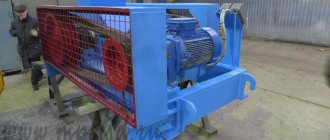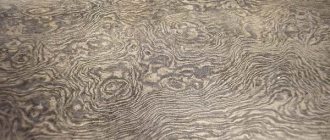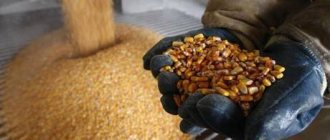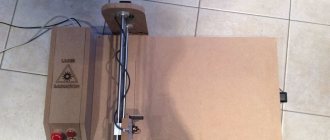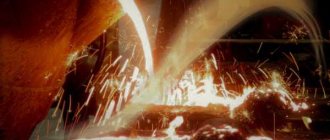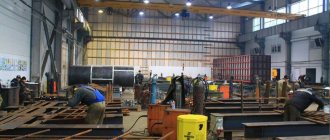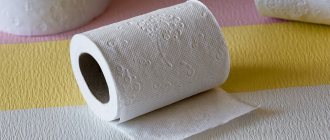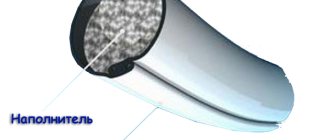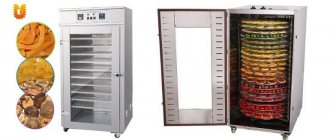Author of the article: Sudakov A.P.
Today, charcoal is quite in demand - it is bought by restaurants and cafes for cooking, chemical and metallurgical plants for production processes, and people for barbecuing and grilling. Charcoal production as a business —
a great solution if you live in wooded areas. The procedure does not require major investments and quickly pays off with the right approach. In this article we will look at how to open your own charcoal making business and give an example of calculation.
Introduction
Charcoal is a high-carbon material that is obtained by pyrolyzing various types of wood while limiting the flow of air. To produce it, you need a special oven, which can be placed either in your own garage, in the open air, or in a specially equipped workshop.
Charcoal is a profitable business
As of 2021, there is an average market saturation of these products in Russia, so any businessman can easily start production and find points of sale for finished products. The main thing is to calculate and think through everything correctly, analyze the consumer market, and think about where it is more profitable to sell products in bulk. Create a detailed business plan and stick to it as you implement your idea.
Coal producing countries
The leaders in terms of coal production volumes, according to the Statistical Review of World Energy, in 2021 were:
- China – 3,846 million tons.
- India – 756.4 million tons.
- USA – 639.8 million tons.
- Indonesia – 610.0 million tons.
- Australia - 506.7 million tons.
- Russia – 440 million tons.
- South Africa – 254.3 million tons.
- Germany – 133.9 million tons.
- Kazakhstan – 115.4 million tons.
- Poland – 112.4 million tons.
Author: Yuri Florinskikh All articles by this author
Latest articles by the author: The largest producers of milk and dairy products in the world Diamonds: properties, mining methods and applications
Types of coal
Many people think that all charcoal sold in supermarkets and gas stations is the same, but in fact there are many varieties. It can be divided into:
- Red. It is made from coniferous trees using a special technology by soft charcoaling.
- White. To create it, hardwood is used, such as oak, birch, elm, hornbeam, etc.
- Black. To create it, soft wood is used: linden, aspen, poplar, alder, willow, etc.
Many entrepreneurs produce only classic black coal, but if you want to capture the market, the range should be expanded. You should focus on what kind of raw materials you can get: if oak forests grow in your area, then you will have to use this particular material, etc. You should also know that there are three grades according to GOST 7657-84 A, B and C. The higher the grade , the higher the quality of the coal and the more willingly they will purchase it, so try to make only a high-quality product.
Please note: a large number of entrepreneurs use various production waste from woodworking and furniture companies, as well as rotten logs and bars as raw materials. This is not recommended, since the quality of coal from such raw materials will be extremely low.
Of course, you can earn more this way. But customers will not like your products and in the end this will damage the image of the young business.
You should also consider in what packaging to sell the product. It is usually packaged in paper bags and plastic bags with a capacity of 2 to 50 kg. The most popular among the population are bags weighing 5-10 kg, while restaurants and enterprises buy it in 50 kg bags to reduce the cost of raw materials.
Dryer to improve the quality of raw materials
Product labeling
The difference in approaches is explained by the high content of resin-like substances in coniferous raw materials, which, if the pyrolysis reactor is sealed, will complicate the implementation of the technology.
From the pyrolysis products of the first group, coal is obtained, marked with the letter A, with a maximum carbon concentration reaching 90% and a minimum content of mineral components (2.5%).
If a mixture of raw materials from the first two groups was subjected to pyrolysis, then the maximum carbon content in charcoal labeled B reaches 88% with the same ash content.
If a mixture of all rocks is subjected to charcoalization, a coal conglomerate is formed, marked with the letter B. The concentration of skeletal carbon in it reaches a maximum of 77%, mineral components - 4%, many other parameters are not standardized.
Note! Products of grade A have the best characteristics, therefore they are used for subsequent activation to obtain sorbents.
Coal of group B demonstrates good qualities; it and products of grade A are used in industrial organic synthesis.
The result of implementing charcoal technology has acceptable properties to meet the needs of most consumers if the process is carried out correctly. There are many people who want to prepare a valuable product from wood. There are far fewer people willing to delve into the specifics of implementing an idea in practice, which can lead to unpleasant consequences with unpredictable outcomes.
How to make charcoal
Next, we will analyze the technology for producing charcoal. There is nothing complicated about it - the process is based on the principle of pyrolysis. The finished raw material is burned at a given temperature without access to air and turns into coal. The production algorithm is as follows:
- Raw materials are manually loaded into the oven.
- The oven turns on, burning occurs.
- The coal is unloaded, cooled, packaged and sent to the warehouse.
As you can see, there is nothing complicated in the procedure, but during production you should strictly monitor safety precautions. Be sure to follow fire safety, install an alarm and have several fire extinguishers on hand so that if a fire occurs, it can be quickly extinguished.
The best raw material for making coal is wood in lumps, cut into pieces of 40-60 cm. If you plan to purchase logs, you will have to hire a special person who will grind them to a given size. The cheapest way to buy raw materials is from a supplier or at woodworking plants - they are available in almost all regions of Russia. Agree with them on wholesale supplies - the cheaper you can buy raw materials, the greater the profit.
Production room/site
As a rule, the production of charcoal takes place in an open area. The land plot must have an area of at least 200 square meters. meters, cleared of debris and vegetation. In addition to the installed furnaces, the site must be equipped with a warehouse for raw materials and finished coal, and a staff room. In addition, the work team must have fire fighting equipment.
It would be advisable to place the production site next to or close to timber processing enterprises, sawmills, etc., to reduce costs and time for transporting raw materials.
Equipment
Let's consider what equipment you need to purchase for the production of charcoal. Today the market offers entrepreneurs a wide range of specialized equipment, from inexpensive manually loaded ovens to automated lines capable of producing tens of cubic meters of finished product per shift. The main equipment for production is a pyrolysis oven. We do not recommend starting a business with professional stoves - first, purchase a small one, master the process, find clients, and then calculate how much coal you can sell, and based on this, select a new device. When choosing, consider the following factors:
- Available area. Entry-to-mid-level ovens take up about 40 m2, so consider whether you can place it on your site or in a workshop.
- How much raw material can you load at one time? Keep in mind that to produce 1 ton of coal you need 7-9 tons. The higher quality the loaded wood is, the better the product will come out.
- Duration of pyrolysis. On average, one cycle lasts about 50 hours, but it all depends on the type of wood, the selected equipment and the volume of the furnace.
- Power of the pyrolysis furnace. Power is how much coal can be created in one cycle. There are models on the market with a capacity from 100 to 2000 kilograms of finished products.
Pyrolysis oven for manufacturing
Cost of the set
To start coal production, you will need not only to rent a suitable plot of land, hire workers, but also purchase equipment. The most important element of production is the oven. Its cost may vary depending on the size and volume of raw materials processed. On average, such a device can cost about 300,000 rubles.
Another 60,000 rubles will be spent on landscaping the area and installing equipment. You should also plan for shipping costs. Transportation of equipment to the production site can cost 50,000 rubles.
What you need to get started
Next, we’ll look at the charcoal production technology and the equipment you need to get started. The main thing in this matter is the oven. The price depends on its power - in 2021, a small 100-kilogram stove can be bought for 50,000, a full-fledged 2-ton stove for 1,000,000 rubles. Thanks to this division, you can choose the option that suits you both in terms of price and performance. Many entrepreneurs start their journey with a 300-500 kg stove, after which, if necessary, they buy a second one or exchange it for a more powerful one. Note that not only pyrolysis, but also retort furnaces are available on the market, but they are of worse quality, so they should not be considered as an alternative. To get started you will also need:
- Electronic scales 5-7,000 rubles.
- Packaging device - 100-150,000 rubles.
- Chainsaw - 10,000 rubles.
This is the minimum set of equipment to get started - it is quite enough for beginners and small workshops. In the future, you may need separators for grinding, dryers to improve the quality of raw materials, dispensers to automate the process, special supply lines, etc., but this equipment is usually used in large enterprises, so you shouldn’t think about it yet. You can save even more by purchasing not a ready-made stove, but by ordering the manufacture of a barrel for pyrolysis from local craftsmen, but this is an option for those who have a seriously limited budget - it is better to immediately buy a high-quality and specialized stove.
Organizational plan of the enterprise
Before purchasing equipment and counting on monthly profits, it is necessary to prepare all documents for legalization of activities.
Your organizational plan should include all stages: finding a location, purchasing equipment, hiring employees and contracts with future suppliers.
It is necessary to understand that sometimes unexpected expenses may arise and demand may decrease, so the previous calculations are very approximate.
The minimum business plan will look like this (with approximate prices in Russian rubles):
- Rent of a plot - 20,000.
- Salaries for 4-5 people - 150,000.
- Furnace for production - 200,000.
- Device for chopping wood - 100,000.
- Axes, chainsaws, hacksaws, cleavers - 50,000.
- Product dispenser by weight - 140,000.
- Device for sealing bags - 16,000.
- For briquetting - additional costs for a mixer, press, mill, dryer.
- Registration and registration - about 10,000.
- Advertising.
- Transport.
- Additional expenses.
- Purchase of raw materials (firewood, bags) - 50,000.
Some items will cost you more due to the location of the enterprise; some devices can be rented for a while.
Registration of activities
You have several options on how to register your business. But the simplest and least expensive option is to register an individual entrepreneur and choose a simplified taxation system (STS). In this case, the state duty is minimal - 800 rubles.
Coal production
The simplified tax rate varies:
- 6% of your company's income;
- 15% of the amount equal to the difference between income and expenses.
In order to register an individual entrepreneur, you must prepare the following documents:
- Passport;
- application for registration of individual entrepreneurs for an individual;
- TIN;
- Receipt for payment of state duty;
- Application for choosing the simplified tax system.
When you fill out an application for registration of an individual entrepreneur, indicate code 02.20 OKVED, which applies to enterprises producing charcoal.
An application for opening an individual entrepreneur with the simplified tax system is considered within 3 working days. This option is the simplest for beginning entrepreneurs and does not require additional legal advice.
Site rental
The first difficulties you will have to face are choosing a suitable site and rental costs. Main requirements for the premises:
- Location outside the city and away from residential areas.
- It is advisable to find sources of raw materials nearby so as not to spend too much on transportation.
- The size of the site is about 200 m2.
- At least several zones: production, storage, staff premises.
It is better if you immediately budget for the purchase of a plot. This will slow down the payback, but will increase the monthly profit.
Staff
The production of charcoal does not require highly qualified specialists; it is enough to undergo training in the use of the devices. The process, if properly organized, can be automated.
Most often, you can limit yourself to 2 employees, a watchman and an accountant, and manage the enterprise yourself. If the production is small, then accounting services can be outsourced to an agency, where your salary and income will be calculated once a month. This will cost less than paying a full monthly salary to a specialist.
For development, it is better to hire a manager and an advertising specialist to promote products on the market and look for new suppliers.
Purchasing raw materials and selecting suppliers
At the initial stage of enterprise development, it is important to find suppliers with low cost of raw materials. You do not need to look for high quality wood; it is enough to purchase waste at a low cost, for example, from:
- Sawmills.
- Furniture factories.
- Woodworking factories.
The main requirement for a supplier is stability. It is important that there are no interruptions, that your employees are evenly loaded with work, and that the equipment does not stand idle.
The volume of raw materials must be calculated, taking into account the coal yield of 25-40% (depending on the type of wood).
Purchase of equipment
The most expensive item in the budget is the purchase of equipment. We have already written above in the business plan what may be needed.
In order to start an enterprise, you need to buy:
- A machine for splitting raw materials.
- Industrial scales.
- Chainsaws.
- Charcoal kiln (with several removable containers).
- Packing machine.
- Electric generator.
Choose high-tech, economical and environmentally friendly equipment. In modern devices, the gas released at high temperatures enters the firebox, and not into the environment, and burns out completely.
There are two main types of ovens - mobile and stationary. For high productivity, it is better to choose stationary equipment, but it is more difficult to transport and install.
The tree is on fire
To begin with, you can purchase a retort furnace that will produce 400–1000 kg of DU per day. And then expand production and purchase something more powerful.
How to make at home
How is charcoal made in an artisanal way, locating production on a personal plot or summer cottage? There are two most common methods.
In the hole
You can dig a hole in the yard in a place located away from buildings. If you need to get two bags of coal, the depth of the hole should reach half a meter, the width should be 80 cm. The bottom should be well compacted with feet or a special device. When the hole is ready, you can light a fire in it from small branches, gradually adding medium-sized firewood.
Important! Do not allow bark to fall from trees. When burning, it emits a lot of smoke and deteriorates the quality of the charcoal being prepared.
A new portion should be added when the previous part has burned out and has significantly decreased in volume. Within a few hours, you need to completely load the pit with firewood, compacting it periodically. When the firewood has burned through the entire height of the pit, you need to cover it on top with fresh grass, a layer of earth and compact it again. In this form, the homemade “reactor” will cool down for a couple of days, after which the finished coal can be removed.
In a barrel
If you have a thick-walled metal barrel on your farm that does not contain chemical or petroleum residues, you can do without digging a hole.
If the volume of the barrel is large, it makes sense to lay a layer of fire-resistant bricks at the bottom, then build a fire between them and constantly add firewood, not forgetting about compaction. When the layer of bricks is completely covered, a grate is placed on top of the wood pile, which allows heat and flame to pass through well. You can immerse another portion of firewood into the barrel on the grate until the container is full.
When the top layer ignites, the structure must be covered almost tightly with sheet metal, leaving a very small gap on the side. There is no need to achieve complete tightness, and it is impossible to do so. The emitted smoke will at some point begin to acquire a grayish color, at which time the sheet must be moved so that the gap closes. Charcoaling can be considered completed. As soon as the barrel has completely cooled down, you can remove the finished product.
Another technology for preparing charcoal also involves the use of a barrel, bricks and a metal or any other heat-resistant lid.
The difference comes down to the fact that the fire is lit not inside, but on the ground between the bricks on which the container is installed. In order for the wood inside to ignite, the fire outside must burn intensely and for a long time. In the lower part of the barrel, holes must first be made to allow a certain volume of air to enter. The barrel must be kept tightly closed throughout the entire time; only at the end of charcoaling can the lid be removed and the formed coal removed.
In the oven
If the need for firewood is not very great, you can be content with a conventional stove. When looking into the firebox, you should wait until the firewood becomes completely red, then pull it out with tongs and immerse it in a metal bucket or ceramic container, which you need to quickly and tightly close with a lid. After cooling, the coal will be ready.
To increase the resulting portion of charcoal, you can load a large amount of firewood into the firebox, wait for complete combustion, and then close the ashpit, doors, dampers and wait 10 minutes. After this time, you can open the doors and carefully remove the coal pieces.
